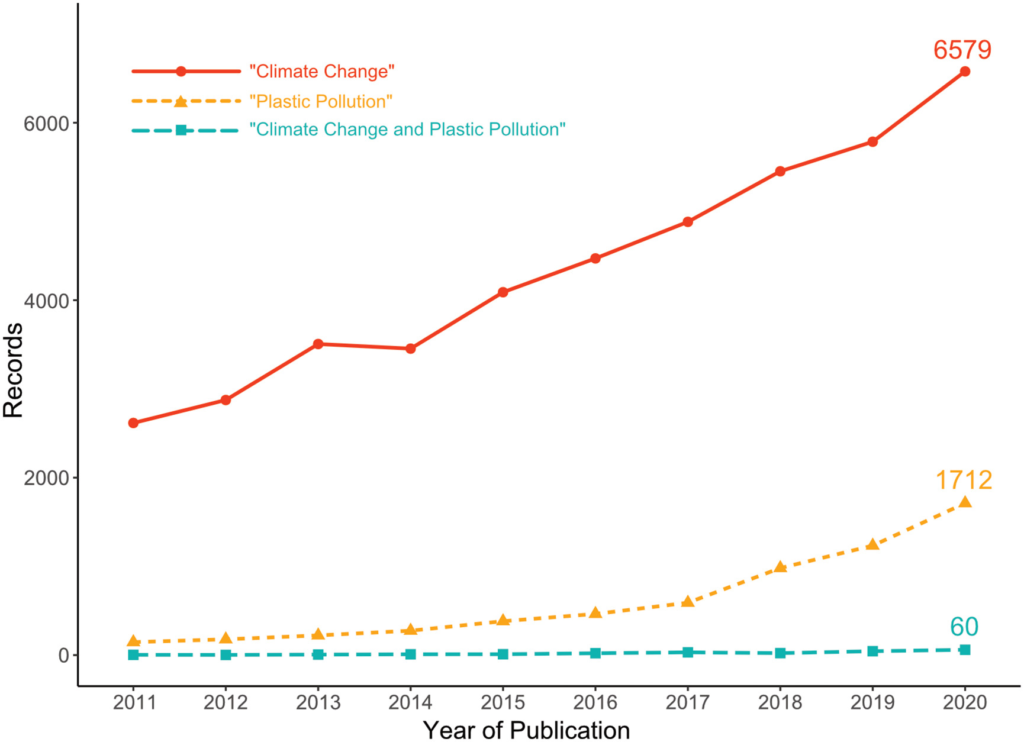Physical Address
23,24,25 & 26, 2nd Floor, Software Technology Park India, Opp: Garware Stadium,MIDC, Chikalthana, Aurangabad, Maharashtra – 431001 India
Physical Address
23,24,25 & 26, 2nd Floor, Software Technology Park India, Opp: Garware Stadium,MIDC, Chikalthana, Aurangabad, Maharashtra – 431001 India

Marine plastics break down into microplastics and contribute to climate change both directly by GHG emissions and indirectly by negatively affecting ocean organisms. We found some misinformation passing through public and social media platforms about ocean plastic pollution. This is really harmful to the entire conservation process including the public mindset. For that reason, our study and research information are presented here.
Plastic pollution is so pervasive that it’s been found in some of our planet’s wildest and most remote locations, including Antarctica, and the deepest canyons of the Mariana trench. Read more about this here Archived.

The Great Pacific Garbage Patch is a collection of marine debris in the Northern Pacific Ocean also known as the Pacific trash vortex. This garbage patch is two distinct collections of debris bound by the massive North Pacific Subtropical Gyre. Read more about this here Archived.
According to our study, we couldn’t find floating islands of polythene and plastic in every ocean. However, there are some similar to the great pacific garbage patch caused by different gyres in the Ocean. They were, namely, the North Atlantic Gyre, the South Atlantic Gyre, the South Pacific Gyre, and the Indian Ocean Gyre.
Plastic buried in a landfill rarely sees the light of day. But in the ocean, which is where a lot of discarded grocery bags, soft drink bottles, and six-pack rings end up as these plastics are lighter than water. In 2009, researchers from Nihon University in Chiba, Japan, found that plastic in warm ocean water can degrade in as little as a year. This doesn’t sound so bad until you realize those small bits of plastic are toxic chemicals such as bisphenol A (BPA) and PS oligomer. In short these “microplastics” end up in the guts of animals or wash up on shorelines. Consequently, humans are most likely to come into direct contact with the toxins. Read more about this here Archived.
Bans, fees, recycling or product redesign alone cannot fix the plastic issue. The ultimate solution is a combination of all of these and more. The biggest impact will come from stopping the massive amounts of plastic litter before it travels over land, and into our waterways and ocean. Read more here Archived.
Most of the plastics in the ocean come from items we use on a daily basis such as bags, bottles, caps, food containers, etc. By limiting single-use plastics in our everyday lives and disposing of these items properly, we can reduce the amount of plastic waste entering the ocean. Read more on how you can help here Archived.
Efforts should be made to adhere to and strengthen existing international legislative frameworks that address marine plastic pollution. The most important is the 1972 Convention on the Prevention of Marine Pollution by Dumping Wastes and Other Matter (the London Convention), the 1996 Protocol to the London Convention (the London Protocol), and the 1978 Protocol to the International Convention for the Prevention of Pollution from Ships (MARPOL). Read more here Archived.
Governments, research institutions and industries need to work collaboratively to redesign products and rethink their use and disposal to reduce microplastic waste from pellets, and synthetic textile tires. There are two types currently on the market, plant-based hydro-biodegradable plastic and petroleum-based oxo-biodegradable plastic. One solution to this environmental disaster is biodegradable plastic. Read more here Archived.
More funding for research and innovation should be made available to provide policymakers, manufacturers, and consumers with the evidence needed to implement technological, behavioral, and policy solutions to address marine plastic pollution.
When marine animals consume plastic, the toxins contained in plastics break down inside their bodies. So in turn when humans eat seafood, we’re consuming these, too. Some of these plastic toxins are linked to hormonal abnormalities and developmental problems. But researchers are still trying to understand exactly how our health is affected when we consume plastic via fish and shellfish. Studies so far have suggested that microplastics don’t necessarily pose a risk to human health. But there’s still so much we don’t know. One concern is that plastics in the ocean eventually degrade into Nano-plastics, which are so small they could enter human cells when consumed.
The Mariana Trench, the deepest point in the ocean, extends nearly 11,034 meters (36,201 feet) down in a remote part of the Pacific Ocean. A recent study revealed that a plastic bag, like the kind given away at grocery stores, is now the deepest known piece of plastic trash, found at a depth of 10,975 meters (36,000 feet) inside the Mariana Trench. Scientists found it by looking through the Deep-Sea Debris Database, a collection of photos and videos taken from 5,010 dives over the past 30 years that was recently made public. Therefore, we cannot say there is no plastic at the bottom of the sea. For more videos, photos on deep sea plastic effect you can follow the National Geographic website and more information can be found here Archived.
Also Read : Plastic Menace & Impacts on Climate Change – A study on Sri Lanka
Furthermore, while there are limited studies measuring the impacts of plastic pollution to climate change, due to the complexity of gathering an accurate data set, limited studies show that there both curves are on the rise as seen below.

Same research sheds light on how these two factors are interlinked. Plastics contribute to GHG emission throughout its life cycle. Also climate change and plastic pollution can co-occur through the environment and at the same time the effects of climate change could impact negatively to spread the plastic pollution in a wider area as seen in this graphic